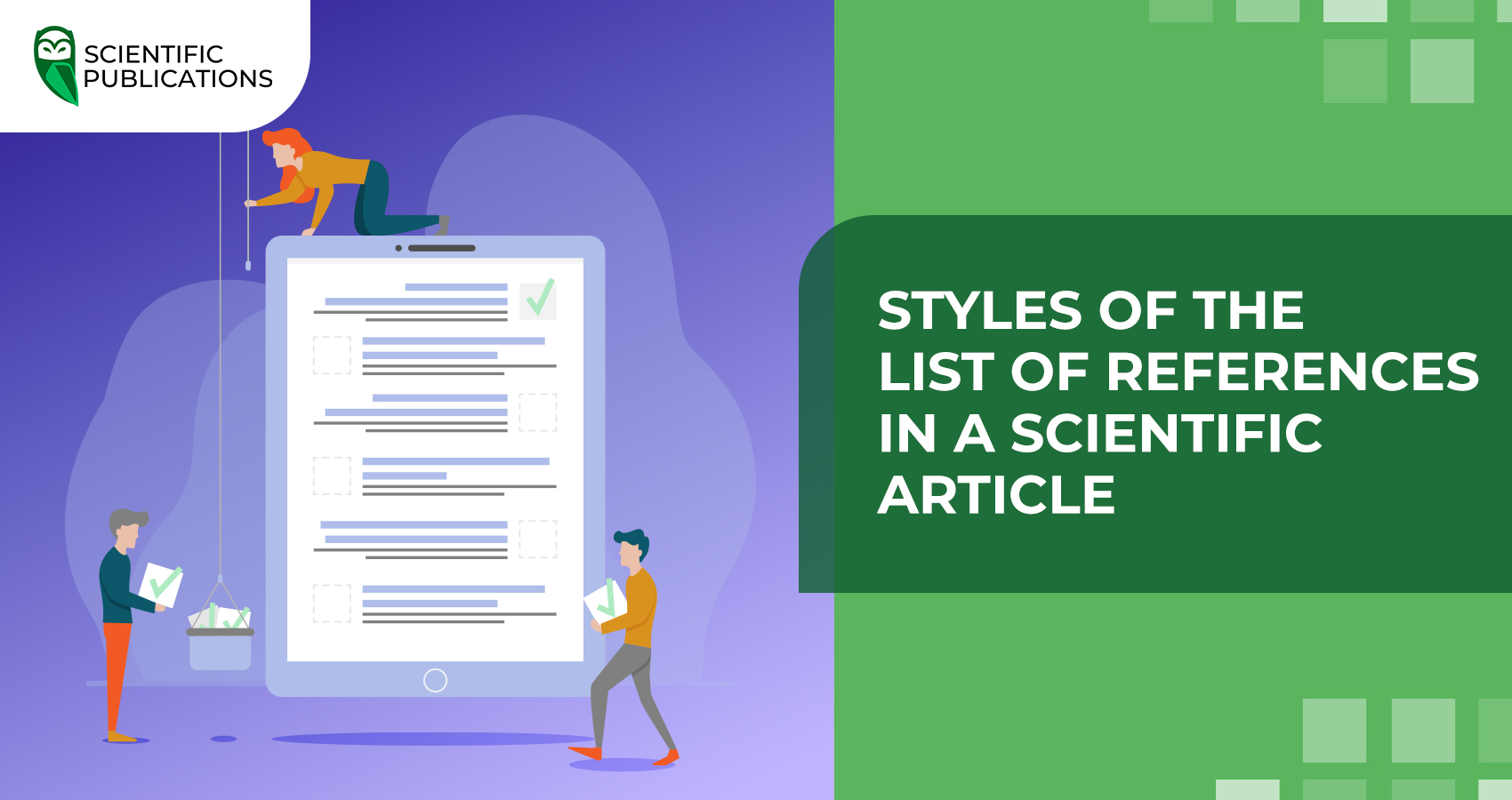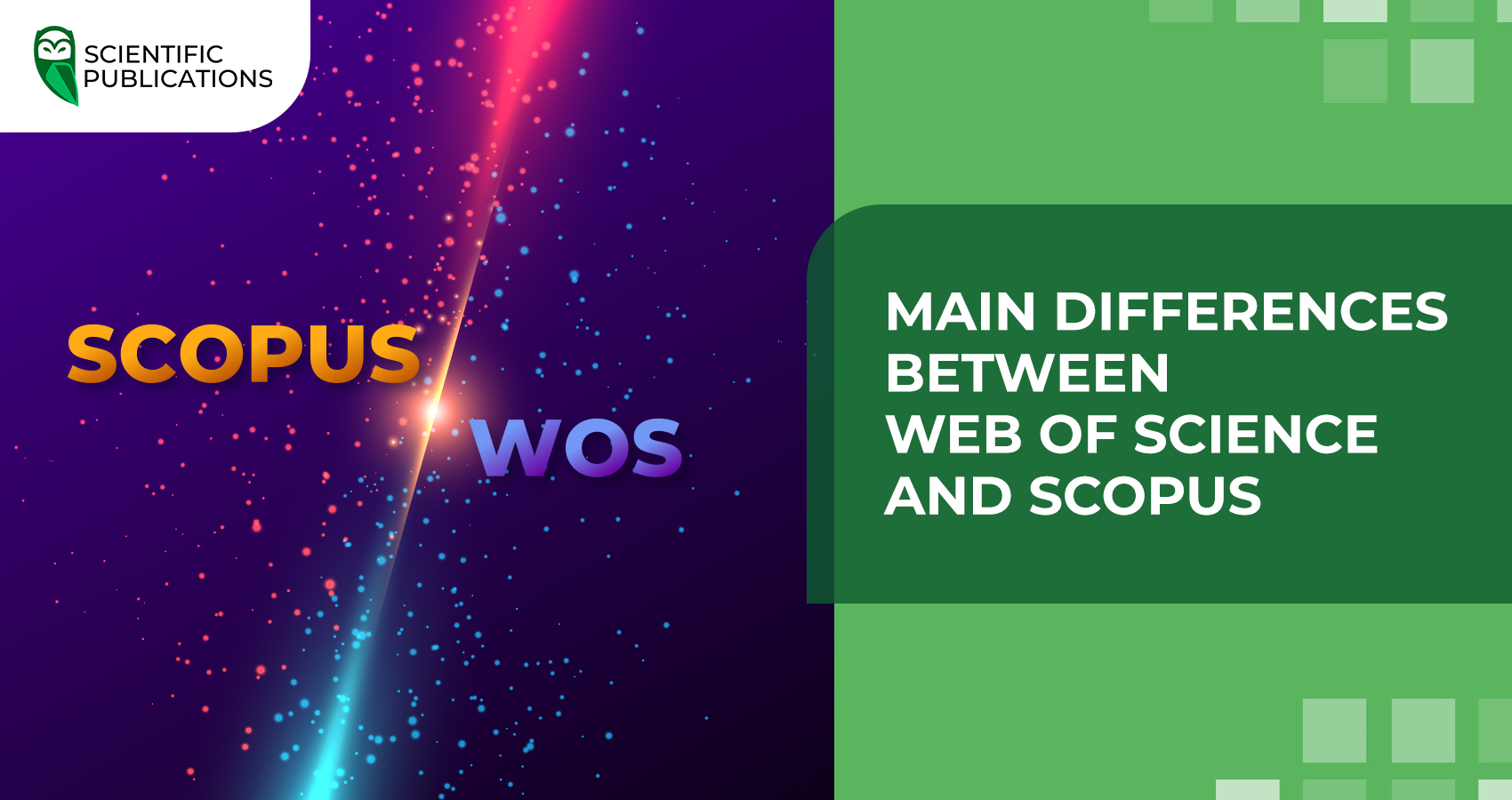Forming a list of references is one of the key stages of working on a scientific article. Many authors make mistakes when compiling a bibliography. What are the rules for organising bibliographic information? Today, we are going to consider at the most common styles of bibliographic references used when writing a scientific article.

The most common bibliographic styles
APA (American Psychological Association)
APA is a bibliographic style used by the American Psychological Association. Initially, it was developed for citing sources in psychology research papers, but over time, it has become widely used in the fields of anthropology, sociology, education, and others.
The bibliography is presented in English. The list of references is arranged in alphabetical order by the author's surname.
If a source does not have an author, it is ordered by the first letter of the title. It should be added that if several works by the same scholar are used, they should be arranged in chronological order, starting with the most recent edition.
The most commonly used referencing style is APA 6th style.
APA 6th referencing style
An example of how to cite in the text:
- Single author: According to S.A. Smith (2023)...
- Two authors: According to S.A. Smith & S.V. Anderson (2023)...
- More than 2 authors: According to S.A. Smith et al. (2023) was developed...
An example of how to cite a source in a text:
- One author: (Smith, 2023).
- Two authors: (Smith & Salihov, 2023).
- More than 2 authors: (Smith et al., 2023).
In the case of a source without an author:
- (Economic statistics..., 2023)
No publication date:
- (Economic statistics..., n.d.)
It is recommended to put the reference to the source used at the end of the sentence.
An example of how to cite references in a bibliography:
- A book with one author: Castagnino, D.O. (2010). Evolution of the potato (Solanum tuberosum L.) market in Argentina. Argentina: Centre of Educational Literature.
- Book with three authors: Hossain, M.M., Pranto, M.A., & Hasan, M.N. (2023). Design of a 20 MW grid-connected solar photovoltaic power plant for a community in Char Fasson. Dhaka: Ahsanullah University of Science and Technology.
- An edited book: Smith, S.A., & Anderson, S.V. (Eds.). (2017). Economics. Birmingham: Packt Publishing.
- Chapter in the book: Hetman, A.P. (2013). Potato growing. In Methodological recommendations for conducting research with potatoes (pp. 205-212). Kharkiv: Krossroud.
- Conference report: Joshi, S., Bairwa, A.K., Pljonkin, A.P., Garg, P., & Agrawal, K. (2023). From pre-quantum to post-quantum RSA. In Proceedings of the 6th international conference on networking, intelligent systems & security (pp. 1-8). doi: 10.1145/3607720.3607721.
- Article in the journal: Issad, M., Anane, N., Bellemou, A.M., & Boudraa, B. (2020). Secure hybrid crypto-system AES/RSA on FPGA for data communication. Malaysian Journal of Computing and Applied Mathematics, 3(1), 1-10. doi: 10.37231/ myjcam.2020.3.1.38.
- Diploma thesis: Nguyen, H. (2022). Programming language interoperability in cross-platform software development. (Master's thesis, Aalto University, Espoo, Finland).
- Dissertation: Dempewolf, M. (2020). Perceptions of mobile developers adopting cross-platform methods: A generic qualitative inquiry. (Doctoral dissertation, Capella University, Minneapolis, USA).
- Legislative acts: Law of the Czech Republic No. 165/2012 Sb. “On Supported Energy Sources and on Amendments to Certain Acts” (2012, April). Retrieved from https://www.zakonyprolidi.cz/cs/2012-165.
- Web page: Bleichenbacher Attack Explained. (2019). Retrieved from https://medium.com/@c0D3M/bleichenbacherattack-explained-bc630f88ff25.
More information can be found here: https://www.studiaturistica.cz/wp-content/uploads/2019/12/APA-6th-style-referencing.pdf.
Chicago Style
Chicago Style was developed at the University of Chicago Press back in 1906. Initially, its main field of application was the social sciences, but over time, this style has been used in physical and natural sciences.
The Chicago Manual of Style (17th edition) offers two main approaches to referencing: Notes and Bibliography and Publication System (a variant of the Harvard style).
Both footnotes and endnotes can be used in the Notes and Bibliography style, but this manual focuses on footnotes. References in the text are given in the form of footnotes, which are supplemented by a bibliography at the end of the document. The footnotes and bibliography should identify each source (book, article, web page, video, etc.) precisely so that readers can easily find it. In the text, each footnote is identified by an incremental (superscript) number.
An example of the formatting:
- Note: Alastair Blanshard, Hercules: A Heroic Life (London: Granta, 2006), 151.
- Bibliographic entry: Blanshard, Alastair. Hercules: A Heroic Life. London: Granta, 2006.
CSE (Council of Science Editors)
CSE is one of the most popular citation styles in scientific and technical texts, especially in biology, chemistry, and medicine. It establishes clear rules for referencing sources. CSE offers three systems of in-text citations for scientific articles, books, and other scholarly publications.
CSE's three systems of in-text citations:
- The citation-sequence system. In the citation-sequence system, endnotes are placed in the order of their first appearance in the text. For example, if the work of S.A. Smith, the full entry for this work will be number 1 in the list of endnotes. The same number is used for each subsequent reference to the same document in the text.
- The title-year system. In this system, references in the text consist of the name of the author or authors and the date of publication of the work. In the final list, such references are not numbered; they are presented in alphabetical order by author's name and date of publication. If one author has several works, they are listed in chronological order.
- The citation-title system. In the reference-title system, endnotes are listed in alphabetical order by the last name of the first author. If one author has several works, they are listed in the alphabetical order of the titles. Each reference is assigned a number in this sequence: a paper by S.V. Anderson will be numbered 1, M. Greyson will be numbered 2, and so on. These numbers are used for in-text citations, regardless of their sequence in the text. For example, if the work by A.P. Johnson is numbered 35 in the bibliography, all in-text references to A.P. Johnson will be numbered 35.
These abbreviated references in the text refer the reader to the bibliography at the end of the document. For more information on each system, as well as examples of how to use them, please follow this link: https://www.csemanual.org/Tools/CSE-Citation-Quick-Guide.html.
Vancouver Style
The Vancouver Style is a numbered system of referencing that is widely used in medical publications. Numbering references makes them easier to find and identify in a bibliography. In this style, the reference number is inserted into the text at the point where the source is cited, and it corresponds to the entry in the numbered list of references.
An example of the formatting:
- Reference: Davies et al. state that the data is ‘unreliable’ (1, p. 15).
- List of references: 1. Davies B, Jameson P. Advanced economics. Oxford: Oxford University Press; 2013.
There are 4 options for marking citations in the text:
- in parentheses: (1);
- in square brackets: [1];
- superscript digital index:1;
- superscript digital index in square brackets : [1].
Numbers are usually placed after the author's name or after a direct quotation, and may also appear at the end of a sentence. When mentioning an author in the text, indicate only his or her surname. If a source has several authors, cite only the first author's surname followed by “et al.”:
- Davies et al. (1) argue that...
More information about the Vancouver style can be found at https://www.scribbr.co.uk/referencing/vancouver-style/.
The correct citation of sources is an important stage in the preparation of a research paper, as it confirms the reliability of the facts presented and makes it easier for readers to find primary sources. Compliance with the rules of citation improves the quality of the research.
Recommendations for authors of a scientific article
- If you used a source that is available both in print and on the Internet, it is advisable to add a link to its online version. This will help experts to easily check the reliability of the information when reviewing the work, and can also speed up the process of reviewing the article for publication.
- Please note that all sources must be included in the list of references. Otherwise, the information in the text may be considered plagiarism. All references in the article must correspond to the sources in the list.
- It is recommended to choose up-to-date sources of information, as excessive use of outdated literature is not supported by the editors of scientific journals. Avoid excessive citation of one author or one publication (no more than 2-3 times), as well as self-citation of materials from the journal to which you are submitting the article.
- Remember that the requirements may vary from one journal to another. Follow the recommendations and guidelines of the journal to which you are submitting your article, as this will help to increase the chances of faster acceptance and publication of your work.
If you need help with publishing a scientific article, contact “Scientific Publications”. We guarantee high quality services and ongoing support at all stages of cooperation. Fill out the form below, and our manager will contact you within a business day.





